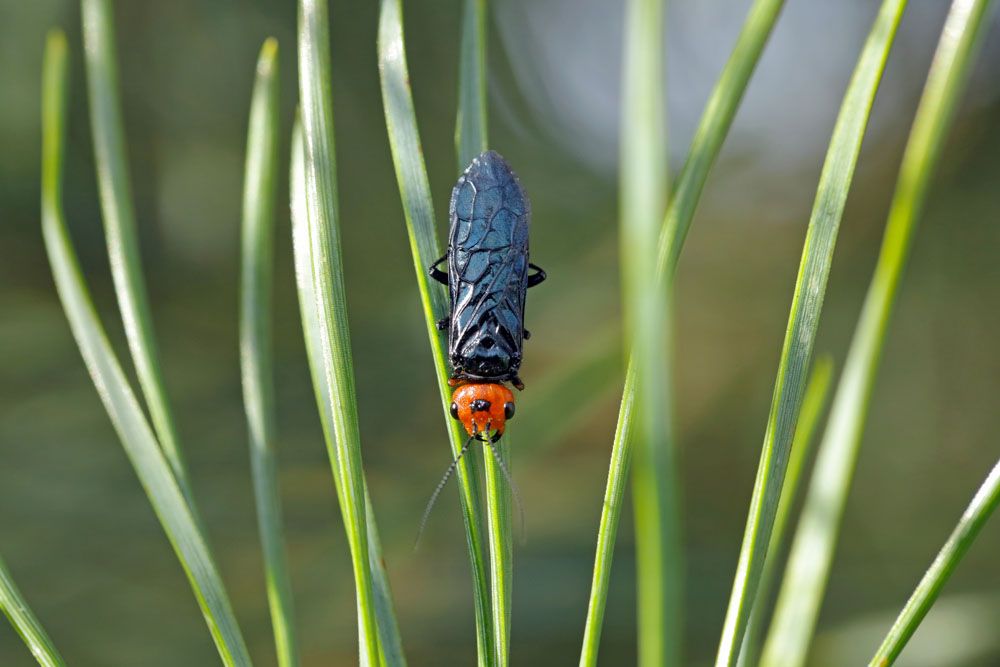
Pine False Webworm – Acantholyda erthrocephala
The Pine False Webworm (Acantholyda erythrocephala):
Common Name: Pine False Webworm
Latin Name: Acantholyda erythrocephala
Appearance:
The Pine False Webworm is a type of sawfly. When they are adults, they look like wasps and are about 8–10 mm long. They are primarily black, but their head and body have red or reddish-brown spots.
Host Plants:
Pine False Webworm larvae typically feed on pine trees, notably Scots pine (Pinus sylvestris) and mountain pine (Pinus mugo).
Territory:
They are commonly found in coniferous European forests, including Germany, France, and Poland.
Damages caused by Pine False Webworm:
The larvae of the Pine False Webworm make nests in the leaves of host pine trees that look like webs. They make small holes in the needles while eating, which can change the color and cause the leaves to fall off. When poorly infested, trees can become weaker and more likely to be damaged by other things.
Life History and Habits:
- Egg Stage:The female Pine False Webworm sawfly lays eggs on the needles of pine trees that it feeds on.
- Larval Stage:Once they hatch, the larvae eat the needles and build unique silk homes to live in groups.
- Pupal Stage:The larvae pupate in the dirt at the base of the host tree when they are ideally grown.
- Adult Stage:Pine False Webworm sawflies emerge from their pupae as adults. It takes them only a short time to die, and their main job is to reproduce. To start a new generation, the females lay eggs on host plants.
